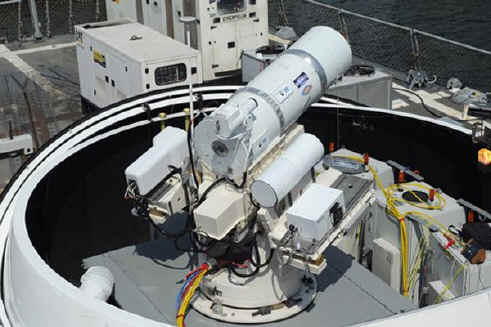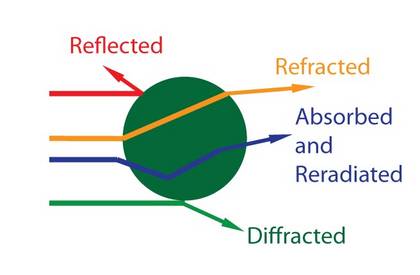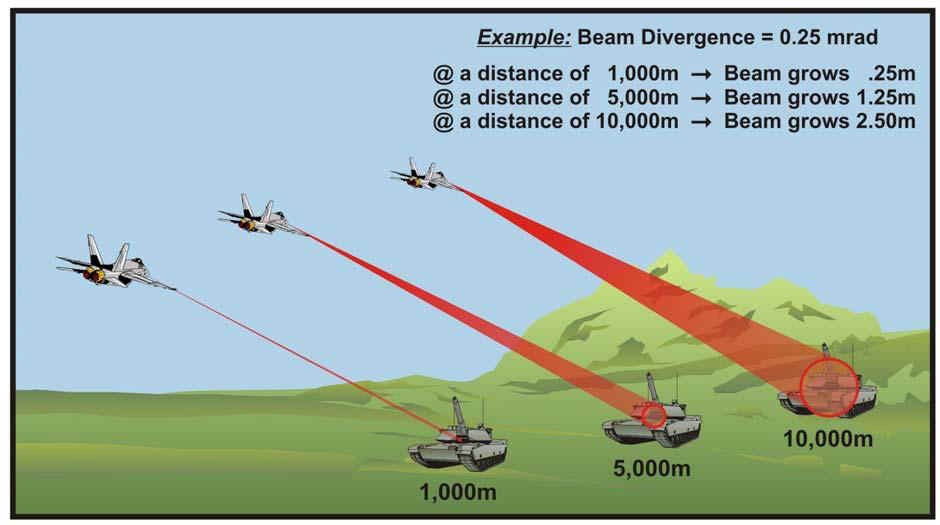_____________________________________________________
Lasers are impractical weapons. This is obvious to anyone who spends an hour reading about the limitations of lasers. They are not useful weapons because of the massive electrical power required, because the atmosphere weakens and distorts the beam, because laser beams spread, and because lasers must maintain a precise spot on a moving target for several seconds to burn through. I wrote about this many years ago while contractors stole billions of dollars via the Airborne Laser program that was eventually cancelled. That concept relied on dangerous chemical lasers, but as recent technological innovations allow solid state lasers to grow in power, the laser weapon scammers returned to the Pentagon.
 Proposals to place
lasers on aircraft are ridiculous given the electrical power required and the simple fact
that bouncing aircraft cannot keep a laser aimed on a spot, but profitable contracts have been awarded
to Boeing anyway. Ship-based
lasers are also bogus. Lasers are line-of-sight (direct fire) weapons and
the earth is round. This means a laser cannot engage a low-flying incoming
missile until it's detected coming over the horizon roughly 10-20 miles out. It takes
several seconds for radar to track a missile and aim the laser, so
it will have perhaps a minute to shoot down the missile, and it requires
several seconds of precise lasing to burn through its thin casing.
Proposals to place
lasers on aircraft are ridiculous given the electrical power required and the simple fact
that bouncing aircraft cannot keep a laser aimed on a spot, but profitable contracts have been awarded
to Boeing anyway. Ship-based
lasers are also bogus. Lasers are line-of-sight (direct fire) weapons and
the earth is round. This means a laser cannot engage a low-flying incoming
missile until it's detected coming over the horizon roughly 10-20 miles out. It takes
several seconds for radar to track a missile and aim the laser, so
it will have perhaps a minute to shoot down the missile, and it requires
several seconds of precise lasing to burn through its thin casing.
This is not possible more than a mile away because
ship and missile are moving! They roll and bounce up and down. Computer software can predict
ship movements and compensate, but not perfectly, and cannot predict the movements of the incoming missile. An incoming
missile is always making slight flight adjustments to compensate for air
turbulence while tracking its moving ship target, so a laser is unable to keep
the beam on target more than a mile away
due to the tracking/aiming delay. This means if a dozen
missiles are inbound, the system may be able to shoot down only one. And since
these systems are the size of a 5-inch gun mount and need most of the
electrical power from the ship to fire, a cruiser or destroyer can carry just a
couple of systems and will need to remove other weaponry to make room. 
Laser range is also limited because particles in the air reflect, scatter, and distort laser beams, even on clear days. This quickly depletes beam power and limits their effective range to less than a mile. This is a complex topic and several, short technical explanations are found in this article and this one from a US Navy research lab that states even in clear weather:
"A number of physical processes affect and limit the amount of laser energy that can be delivered to a target. These effects are interrelated and include thermal blooming, turbulence, and molecular/aerosol absorption and scattering. These processes affect the laser intensity profile by modifying the refractive index of the air, which causes the laser beam wavefront to distort. Wavefront distortion results in enhanced transverse laser beam spreading, and can severely limit the amount of energy that can be propagated. The maritime environment is particularly challenging for high energy-laser (HEL) propagation because of its relatively high water vapor and aerosol content. In the infrared regime, water molecules and aerosols constitute the dominant source of absorption and scattering of laser energy, and represent a limitation for HELs propagating in a maritime atmosphere."
None of this is secret, yet one reads articles and comments by "experts" and senior officers who seem unaware of these severe limitations. Some of this problem can be overcome by using a low-power targeting laser to analyze the atmosphere in the beam path just before firing the main laser, then using complex optics to adjust lenses to optimize the beam. Billions of dollars were spent the last three decades on this solution with little success because the atmosphere in the beam path constantly changes due to wind and as the beam moves to track a target.
In addition, lasers are worthless in rain, fog, clouds, and haze since beam energy is quickly lost. So even if laser power is greatly improved with magical breakthroughs, an enemy may attack during inclement weather when lasers are useless. Some claim that lasers are the only defense against incoming supersonic missiles, however, such missiles are designed with a hardened nose made with materials to serve as a heat shield needed to resist air friction. A few seconds of laser heating at close range just before it impacts a ship is unlikely to burn through, and wouldn't stop the missile from hitting the ship even if it burned through. The simple GAU-19 .50 cal/12.7mm gatling gun that can fire up to 33 rounds a second would prove far more effective.
Yet another problem with lasers is "beam divergence." Lasers do not emit a steady narrow beam, it slowly enlarges and weakens. Here is an excellent diagram of beam divergence from a US Navy manual.
5.3.2. Laser Beam Divergence. Beam divergence is the spread of the laser beam over distance. Laser spot size is a function of beam divergence and the distance from the laser system to the target. If a designator has a beam spread or divergence of 0.25 milliradian, its spot would have a diameter of approximately 0.25 meters at a distance of 1,000 meters in front of the designator. At 5,000 meters, the beam would spread to 1.25 meters; at 10,000 meters, the beam would spread to 2.5 meters (see FIGURE 7).

In this example of a common laser, at just a kilometer (.625 miles) a laser beam aimed to cut through steel expands to ten inches! That can burn skin and start fires, but not harm a tank or even a moving car. In addition, lasers do not destroy upon contact but require several seconds of EXACT lasing to burn through. Here is a video of a 2016 ship test. Note the weather is clear and the slow flying plastic drone is close. This exposes its large delta wing to laser heating, yet it takes ten seconds of laser contact to cause a fire. An inbound sea skimming missile presents a far smaller and much faster target, and if lasers proliferate, missile makers will introduce shiny stainless steel nose cones to reflect most laser light and blind American sailors. They may also program the missile to fly a tight spiral path to the ship the last mile, like the Russian Kornet anti-tank missile.
Lasers look great in tests when the target and laser are close and motionless on the ground, but when both are bouncing around, accuracy is poor. A large ultra-expensive laser may detonate an incoming missile after several seconds of precise lasing as it nears a ship, but would still result in damage as the momentum (kinetic energy) from the missile fragments penetrate. Increasing the power of lasers does not address this aiming problem, the poor weather problem, and increases the "thermal blooming" problem when heated air particles expand faster and weaken the beam.
Lasers can blind optical systems and pilots (as the British did in the Falklands) so lasers are useful in that role. Stationary vehicle-mounted lasers are useful downing small drones flying slow and low overhead. But lasers can never overcome their range limitation or produce the required power to damage missiles and aircraft upon contact. Nevertheless, laser salesmen roam the Pentagon touting solid-state advancements to collect billions of dollars each year for pointless testing and development. In 2016, experts began to complain since laser weapons are obviously impractical. This caused laser scammers to play the secrecy card. The January 2017 issue of National Defense magazine had an article titled: Navy Officials No Longer Talking Publicly About Laser Weapon Systems, which includes this:
"When asked by National Defense for updates on LaWS, and a test of a 150-kilowatt laser aboard a ship that Vice Chief of Naval Operations Adm. Bill Moran announced last year, he said he would not share them, citing competition between the United States and its adversaries.
'I’m going to be far more reluctant to talk about things like that,” he said. “When it comes to specific capabilities, when it comes to specific schedules, specific operations, … I would rather find a more appropriately cleared room to talk about that.'
Later during the summit, Rear Adm. Mike Manazir, deputy chief of naval operations for warfare systems at OPNAV N9, said that in the past he was happy to speak about program specifics. However, 'we figured out that the competitors were actually learning and doing their own kind of crowdsourcing thing, learning from us,' he said. Richardson did stress, however, that while he would no longer give too many details on its laser program, the service was hard at work developing such systems."
The Admiral is correct. Competitors learned not to waste their time and money on bogus laser weapons! Admiral Manazir also claimed lasers are the future and he needed more money to speed development. However, if his new 150-kilowatt laser could shoot down an incoming missile, he would surely demonstrate this breakthrough. The Admiral did prove capable of dispensing billions of dollars to contactors, so was hired by Boeing in August 2017, the same month he retired from the Navy.
National Defense magazine was good enough to post my comment at the bottom of that article explaining why a ship laser is ineffective, but the article and my comments soon disappeared from the web, and the link to the Navy Research Lab article I quoted is also dead. Laser weapons are a scam, and those profiting will not discuss the issues mentioned in this article because they have no answers. Funding laser research is justifiable, but building and fielding dysfunctional laser weapons is criminal. Nevertheless, in January 2018 the US Navy awarded a contract worth nearly a billion dollars to Lockheed-Martin to deploy two more ultra-expensive, worthless lasers aboard ships.
Carlton Meyer editorG2mil@Gmail.com
©2018 www.G2mil.com
June 2020 Update
Air Force Hits Major Snags With Fighter And Missile Defense Airborne Laser Initiatives